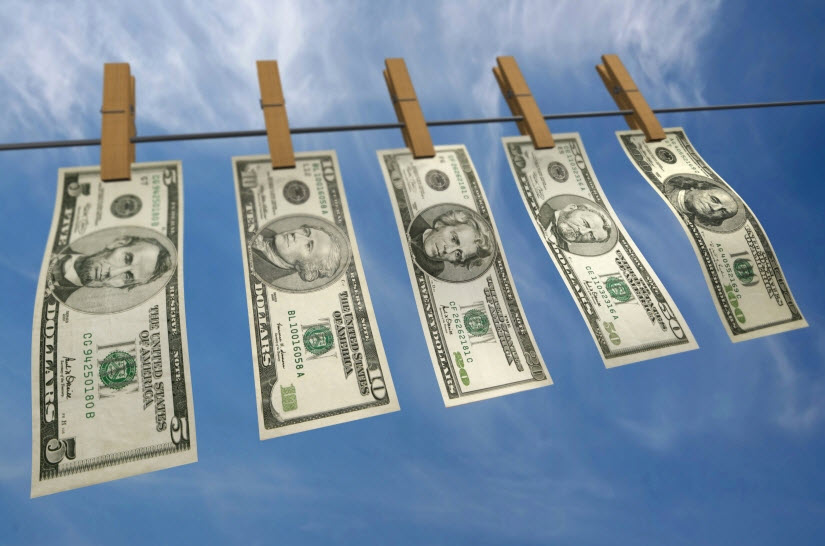Of the countries on the isthmus Costa Rica, Guatemala and Panama stand out as countries that are causing “great concern” in this matter.
From the report by the US State Department: “International Narcotics Control Strategy Report Volume II – Money Laundering and Financial Crimes” March 2015:
Costa Rica
Transnational criminal organizations increasingly favor Costa Rica as a base to commit financial crimes, including money laundering. This trend raises serious concerns about the Costa Rican government’s ability to prevent these organizations from infiltrating the country. Proceeds from international cocaine trafficking represent a significant source of assets laundered in Costa Rica. Sizeable Costa Rica-based online gaming operations also launder millions of INCSR 2015 Volume II Country Reports 100 dollars in illicit proceeds through the country and offshore centers annually. Criminals launder other proceeds through Costa Rica from activities that include financial fraud, human trafficking, corruption, and contraband smuggling. Criminal organizations use financial institutions, licensed and unlicensed money transfer businesses, bulk cash smuggling, and the free trade zones to launder the proceeds of their illicit activities. Money services businesses are at significant risk for money laundering and a potential mechanism for terrorist financing. Trade-based money laundering, while used, is not detected with the same frequency as the above typologies. While there is no recent investigation related to terrorism financing, recent investigations in Costa Rica detected narcotics and arms trafficking linked to the Revolutionary Armed Forces of Colombia (FARC).
Panamá
Panama’s strategic geographic location; dollarized economy; status as a regional financial, trade, and logistics center; and lax regulatory system make it an attractive target for money launderers. Money laundered in Panama is believed to come in large part from the proceeds of drug trafficking due to the country’s location along major drug trafficking routes. Tax evasion, bank fraud, and corruption also are believed to be major sources of illicit funds. Numerous factors hinder the fight against money laundering, including the existence of bearer share corporations, a lack of collaboration among government agencies, inconsistent enforcement of laws and regulations, and a weak judicial system susceptible to corruption and favoritism. Money is laundered via bulk cash and trade by exploiting vulnerabilities at the airport, utilizing free trade zones (FTZs), and exploiting the lack of regulatory monitoring in many sectors of the economy. The protection of client secrecy is often stronger than authorities’ ability to pierce the corporate veil to pursue an investigation. Panama has 16 FTZs, including the Colon Free Zone (CFZ), the second-largest FTZ in the world.
Guatemala is not considered a regional financial center. It continues to be a transshipment route
for South American cocaine and heroin destined for the United States and for cash returning to
South America. Smuggling of synthetic drug precursors is also a problem. Reports suggest the
narcotics trade is increasingly linked to arms trafficking.
Historically weak law enforcement agencies and judiciary, coupled with endemic corruption and
increasing organized crime activity, contribute to a favorable climate for significant money
laundering in Guatemala. According to law enforcement agencies, narcotics trafficking,
corruption, and extortion are the primary sources of money laundered in Guatemala; however,
the laundering of proceeds from other illicit activities, such as human trafficking, firearms,
contraband, kidnapping, tax evasion, and vehicle theft, is substantial. Law enforcement agencies
report that money laundering continues to increase, especially by groups of air travelers heading
to countries, such as Panama, with slightly less than the amount of the Guatemalan reporting
requirement ($10,000), and through a large number of small deposits in banks along the
Guatemalan border with Mexico. In addition, lax oversight of private international flights
originating in Guatemala provides an additional avenue to transport bulk cash shipments directly
to South America. There is no indication of terrorist financing activities.
Guatemala’s geographic location makes it an ideal haven for transnational organized crime
groups, including human and drug trafficking organizations. The Central America Four Border
Control Agreement between El Salvador, Guatemala, Honduras, and Nicaragua allows for free
movement of the citizens of these countries across their respective borders without passing
through immigration or customs inspection. As such, the agreement represents a vulnerability to
each country for the cross-border movement of contraband and illicit proceeds of crime.
There is a category of “offshore” banks in Guatemala in which the customers’ money (usually
Guatemalans with average deposits of $100,000) is legally considered to be deposited in the
foreign country where the bank’s head office is based. In 2014, there were seven “offshore”
entities, with head offices in Panama, the Bahamas, Barbados, and Puerto Rico. These
“offshore” banks are subject to the same AML/CFT regulations as any local bank. Guatemala
has 16 active free trade zones (FTZs). FTZs are mainly used to import duty-free goods utilized
in the manufacturing of products for exportation, and there are no known cases or allegations that indicate the FTZs are hubs of money laundering or drug trafficking activity. There are no
reported hawala or other money or value transfer services operating in Guatemala. A significant number of remittances are transferred through banks and appear to pose little risk for money
laundering.
Casinos are currently unregulated in Guatemala and a number of casinos, games of chance, and
video lotteries operate, both onshore and offshore. Unregulated gaming activity presents a
significant money laundering risk.
